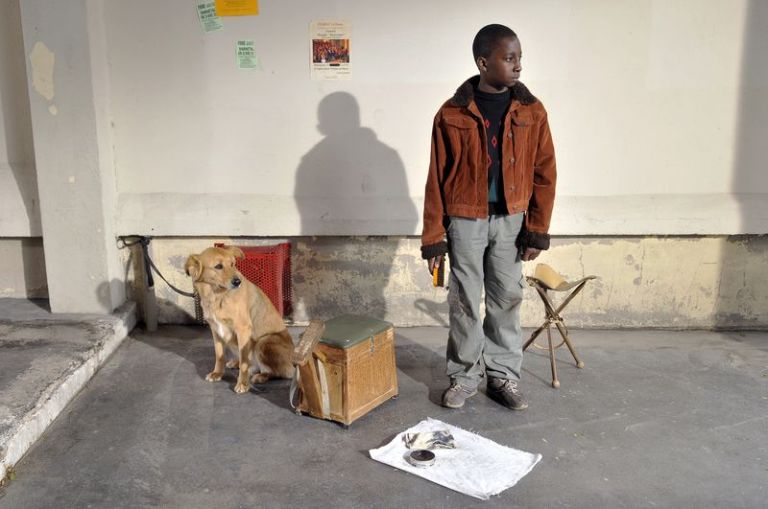
Aki Kaurismäki has his special way to talk about complex issues in humorous way, which does avoid melodrama, but doesn‘t avoid concern of things he‘s talking about. His humor has many faces as well.
In “Le Havre“ this humor is soft and canny. Marcel Marx, dignified ex-bohemian meets days of changes – his wife goes to hospital, and in almost same moments he finds himself taking care of destiny of a refugee boy. This story starts to resemble one of old fairy tales, which has some enigmatical interconnections, which cannot be explained by cause – consequence relation, and hiding some bright lesson in it.
“Fairy-taleness” is held not only in the way story is made, also in the way old and new is combined. In most of the time viewer will see just things and surroundings which could have been valid several decades ago as well as now. Personages are also quite timeless. But big advertising screens, mobile phones and modernly armed police troops are here, doubtlessly contemporary.
The world of relations between characters cannot not to make one smile. Firstly, there are mainly ordinary people, and relations among them are very warmhearted. Other thing – sometimes they are really unconventional, like in the case of Marcel and his wife – I would guess you haven’t seen such couple in your lifetime.
Talent and experience of filmmakers can be felt from the very first scene, where movement of camera and movement of actors work in a very coherent way, creating dynamics which immediately draws viewer into world of “Le Havre”. It is also beautiful, employing mannerism and a bit Godard-like minimalism of scenography, carrying meanings as well as joy for the eye.
Kaurismäki takes cultural and political contexts and interconnects them. There are some religious allusions. Marcel asks his refugee boy: “Quo vadis, Indrisa?”, as well as states, that shepherds and shoeshiners are closest to laws of the hill, shoeshiner being interresting parallel with Christian symbol of washing other persons feet. As other Kaurismäki’s movies, this one doesn’t let political-social surroundings to pass by. Being shot in France (and in French) it engages with immigration problems (which is an unintentional irony – at first it was planned to roll it in Spain or other south coast of Europe). Though, the most important thing being that director is professional in extracting some interesting and attractive essence from slum districts and lousy bars, being among true people doing “honest jobs” (what was the choice of director himself some time ago). It’s good to go there with him – alone you’d probably feel just confused and alienated.
This movie is very warmly accepted in festivals since it appeared in competition program at Cannes in May. It just carries some good aura, which also is supported by facts like that actor dog named Laika received a Jury Prize from the Palm Dog jury.